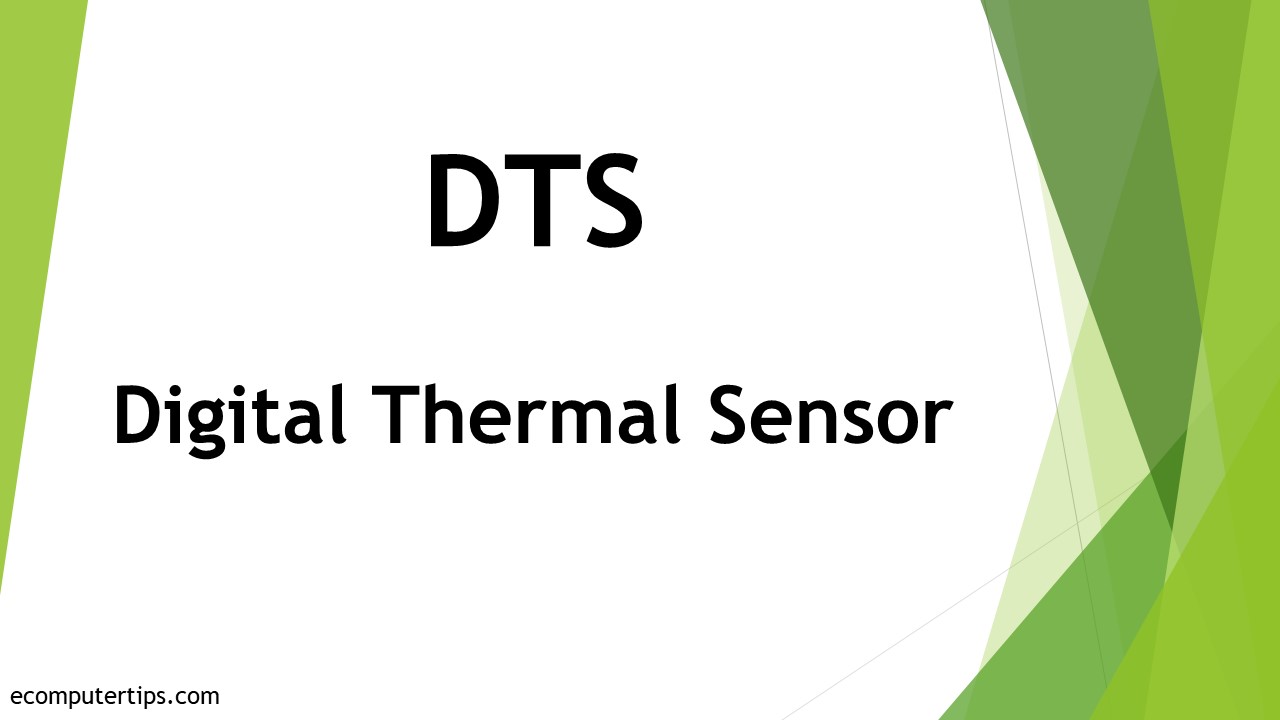In This Article
What is Digital Thermal Sensor (DTS)?
The Digital Thermal Sensor or DTS is the device that is dedicated to measure the temperature of each of the cores in the Central Processing Unit of a computer.
It is developed by Intel and is quite capable of determining the temperature accurately.
KEY TAKEAWAYS
- Digital Thermal Sensor measures the temperature of each of the cores in the processor.
- The DTS usually follows a fixed function and temperature thresholds along with some preset policies to determine the temperature of the cores.
- The primary function of the DTS is to prevent damages to the processor caused due to overheating.
- DTS helps in better thermal management, a key requirement with the increased demand for CPU transistors, their frequency and computational density. It, in turn, helps in providing optimal computing performance.
- Ideally, the accuracy of the thermal sensor translates to power, which, eventually, translates to better and higher CPU performance.
Understanding Digital Thermal Sensor (DTS)

The Digital Thermal Sensors are those specific devices that provide temperature readings through electrical signals when there is a voltage change between two terminals.
There is a DTS in every core of a processor that generates temperature data with respect to TJMax.
You will find the DTS in the Core 2 Duo and the later processors, especially those that come with multiple cores.
The basic function of the DTS of measuring the temperature of the cores is ideally not meant for the benefit of the end users but simply to protect the cores or the processor, as a whole, from damages due to overheating or heat related issues.
These sensors usually come with an Inter Integrated Circuit (IIC) or a Serial Peripheral Interface (SPI).
It may also come with a reference to the internal band gap as well as a meticulous Analog to Digital Converter or ADC.
The output of these digital sensors does not need any additional calibration after they are soldered to the PCB or the Printed Circuit Board.
It is calibrated during the test time to ensure maximum accuracy.
The calibration of the thermal sensors is also done to ensure maximum Tjunction and proper continuation of the readout slope.
All temperature readings taken by the DTS are combined together to display a single value.
This value indicates the hottest spot on the chip. All these readings are post processed in order to determine and filter out random noise.
The temperature reading taken by the DTS also helps in creating more effective and result-driven thermal protection functions activated by the hardware.
The Intel DTS typically supports the legacy Intel Centrino thermal sensor. It also follows the fixed function thresholds, THERMTRIP and PROCHOT.
THERMTRIP refers to the shut down event in the case of any catastrophe. This may happen not only on the CPU but also on the platform.
This is actually the mechanism that helps in identifying the runaway thermal conditions that may affect the performance of the system and cause it to malfunction.
It has the ability to turn off the voltages of the CPU and the platform so that these are prevented from meltdown and lasting damages.
PROCHOT, on the other hand, refers to the fixed temperature brink calibrated or the maximum limit of the junction temperature when it will trip if this threshold is crossed.
It initiates a power reduction action in the hardware and, at the same time, reduces the voltage and frequency to ensure that the CPU is well within its reliability and functionality limits.
DTS may also come with interrupt generation ability apart from temperature reading.
A thermal interrupt is created by two programmable software thresholds when the specific limit is crossed.
This interrupt may be generated for a single core or all the cores of the CPU based on the specific settings.

How Do Digital Temperature Sensors Work?
Temperature sensors typically measure the voltage across the two diode terminals and provide the readings by using electrical signals.
The two metals that make up these sensors produce resistance or an electrical voltage when there is a change in the temperature levels in it.
Typically, when the voltage increases across the two diodes, accordingly there is a rise in the temperature as well.
However, when the temperature rises, there is a drop in the voltage between the emitter in the diode and the transistor terminals.
The working principle of the Digital Thermal Sensors is usually based on the changes in voltage based on the TJMax or maximum Tjunction.
The TJMax is considered to be the maximum safe operating temperature of the cores of the Central Processing Unit or CPU.
The detailed working of the DTS can be summarized as follows:
- When there is a rise in temperature, the sensors read the temperature information from all the cores
- It will report and log the thermal throttle activity
- It will also keep track of the maximum and minimum temperatures in their logging feature and
- Display the reading according to the setting which is usually TJMax but can also be CPUID, MHz, or APIC ID settings.
Depending on the model and features of the DTS, it can also shut down a system based on the CPU and GPU temperature, apart from sending a high temperature alarm.
Conclusion
A Digital Thermal Sensor is very important for a computer to perform well because it is the basis of thermal control of the cores of the Central Processing Unit as well as for software temperature control.
It works on the basis of a few set policies and actions that are related to temperature thresholds or TJMax.